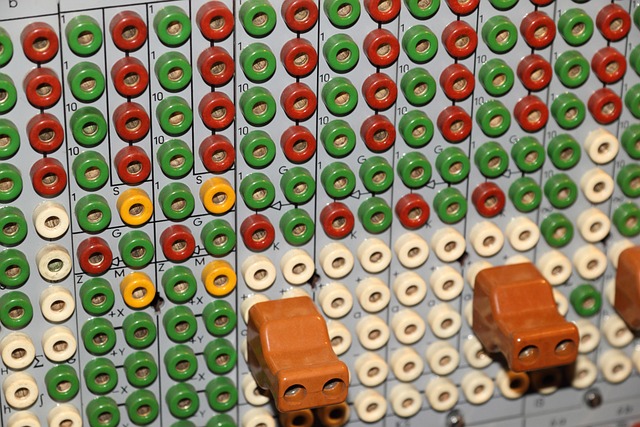Fiber optic technology revolutionizes business network cabling with unprecedented speeds and bandwidth, enabling ultra-fast data transfer for video streaming, cloud computing, and 5G. Its advantages include higher frequencies, minimal signal loss, and superior reliability, ensuring improved network performance and uptime. Strategic deployment, regular monitoring, and adherence to industry standards future-proof business networks, preparing them for emerging technologies like virtual reality and AI.
“Experience lightning-fast data transfer speeds with fiber optic cabling—the future of ultra-high-speed communication. This comprehensive guide explores the transformative power of fiber optic technology for your business network, offering a seamless upgrade from traditional copper cabling.
Learn about the advanced capabilities and benefits that make fiber the superior choice, discover best practices for deployment and installation, and ensure your network remains cutting-edge with future-proofing strategies.”
Understanding Fiber Optic Technology for High-Speed Data
Fiber optic technology has revolutionized data transmission, offering unparalleled speeds and bandwidth for modern communication networks. At its core, fiber optic cabling utilizes thin strands of glass or plastic fibers to transmit data in the form of light pulses, drastically increasing data transfer rates compared to traditional copper wiring. This advanced technique is particularly beneficial for business network cabling, enabling ultra-fast connectivity across enterprises.
The key advantage lies in the ability to support higher frequencies and wider bandwidths, ensuring efficient transmission of large volumes of data over long distances without significant signal loss. This makes fiber optic cabling ideal for demanding applications such as high-definition video streaming, cloud computing, and 5G networks. By adopting this technology, businesses can enhance their network performance, improve latency, and meet the ever-growing data demands of modern operations.
Advantages of Fiber over Traditional Copper Cabling
Fiber optic cabling offers significant advantages over traditional copper cabling for ultra-fast data transmission, making it a preferred choice for modern business network cabling. One of the key benefits is speed and bandwidth capacity. Fiber optics can transmit data at light speeds, enabling significantly higher bandwidths than copper cables, which are susceptible to signal degradation over long distances. This results in faster network performance and supports higher data rates, ensuring smooth transfer of large files, video streaming, and real-time applications without latency issues.
Another advantage is reliability and immunity to electromagnetic interference (EMI). Copper cables are prone to signal loss and interference from external sources, leading to potential data corruption or packet loss. Fiber optics, on the other hand, are less affected by EMI, providing a more stable connection even in noisy environments. This translates to improved network uptime and reduced risk of disruptions, which is crucial for businesses relying on consistent and reliable data transmission for their operations.
Deployment and Installation Best Practices for Business Networks
When deploying fiber optic cabling for ultra-fast data transmission in business networks, careful planning and best practices are essential to ensure optimal performance and future-proofing. Start by assessing the network’s requirements, including bandwidth demands and potential growth, to select the appropriate fiber types and cable standards. It’s crucial to engage qualified professionals for installation to maintain signal integrity and minimize loss.
During installation, follow structured procedures, ensuring proper termination and testing at each junction. Use high-quality connectors and splitters designed for minimal insertion loss. Organize cables methodically, using labeling and routing strategies that simplify future maintenance and upgrades. Regularly monitor network performance and stay updated with industry standards to make informed decisions regarding cable management and replacements.
Future-Proofing Your Network with Fiber Optic Upgrades
In today’s digital era, where data transmission speeds are constantly pushing boundaries, future-proofing your business network cabling is paramount. Fiber optic cabling represents a significant upgrade for any organization looking to stay ahead of the curve. Unlike traditional copper cables, fiber optics offer unparalleled speed and bandwidth, enabling ultra-fast data transfer over long distances with minimal signal loss.
This advanced technology ensures that businesses remain competitive by facilitating smoother operations, faster communication, and more efficient data management. By investing in fiber optic cabling, companies can anticipate future demands for higher bandwidth, ensuring their network infrastructure is ready to support emerging applications like virtual reality, artificial intelligence, and 5G technologies.
Fiber optic cabling offers a groundbreaking solution for ultra-fast data transmission, revolutionizing the way we connect and communicate. By understanding its technology, leveraging its advantages over traditional copper cabling, and adopting best practices during deployment, businesses can future-proof their networks. This investment in fiber optic infrastructure ensures enhanced performance, reliability, and scalability for years to come, setting the stage for a more connected and efficient digital landscape within business network cabling.
